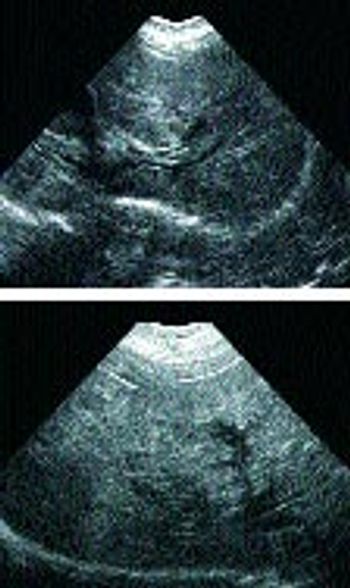
Neogen Corp. has added a line of lightweight drenchers and syringes to its Ideal Instruments veterinary product line.

Neogen Corp. has added a line of lightweight drenchers and syringes to its Ideal Instruments veterinary product line.

Sacramento, Calif.-California veterinary leaders fault some drug manufacturing insiders for derailing a bill to create a special property classification for pets allowing up to $25,000 in non-economic rewards.

Int?l Ally, Inc. now makes its Thermal Aid Pet hot/cold treatment pack available to veterinarians and animal owners.

Calcium oxalate (CaOx) was the most common (47 percent) mineral in feline uroliths submitted to the Minnesota Urolith Center during 2003 (Table 1). More than two-thirds of feline nephroliths were composed of CaOx.

Sunnex introduces the Solo Spot Exam Light with concentrated spot lighting.

Will Rogers was a man of great perception whose homespun brand of humor and philosophy once captivated America.

Merial launched e-commerce capabilities for its Igenity L service, a DNA testing service.

A.S. Slings are made with durable terrycloth and are machine washable, and the towel?s soft fabric makes the sling especially comfortable for the dog, the company says.

Providence House Manufacturing introduces its patented smart ?cat advanced technology? box.

According to the AVMLA Newsletter, a New York law offers immunity from liability to veterinarians who disclose companion animal records with the owner's consent to law enforcement and animal control agencies.

Dayton-The Iams Company has hired Glenn F. Hoffsis, DVM, dean of the College of Veterinary Medicine at The Ohio State University (OSU), as director of veterinary services. Hoffsis will take on the new position April 1.

It was a freezing cold day in February about 30 days after we first arrived in Lamesa, Texas.

Fort Collins, Colo.-Who would you rely on for information in the event of a foreign animal disease outbreak?

Signalment: Canine, Shepherd cross, 11 years old, female spayed, 46.8 lbs.

Hanoi, Vietnam-A vacation in Vietnam left Dr. Michele Gaspar, feline practitioner in Flossmoor, Ill., with a longing to return - this time as a visiting veterinarian.

Ft. Lauderdale, Fla.-The average practice does not know how to improve the incremental fees charged per client/patient beyond $84.20, a new survey reveals.

Synbiotics Corp. announces the USDA-approval of their Witness HW canine heartworm antigen test kit.

EctoKyl CA Shampoo is a triple-strength pyrethrin shampoo formulated to kill fleas and ticks and condition the coat.

Springfield, Ill.-New legislation signed into law by the Illinois governor confronts the issue of euthanasia in animal shelters.

Schering-Plough Animal Health Corp. introduces the industry?s first trivalent vaccine for the costly swine influenza virus (SIV).

Wysong Corp?s line of health-first products now includes two ferret diets, Ferret Archetypal-1? and Ferret Archetypal-2?.

Int?l Ally, Inc. is marketing the Thermal Aid Pet hot/cold treatment pack to veterinarians and animal owners.

Negotiating for the right deal means understanding the compensation process, seeking out appropriate counsel

Jorgensen Laboratories, Inc., introduces the Protect-A-Pad protective cover for warm water circulating blankets.

As the Group Health and Life Insurance Trust (GHLIT) reports flat growth due to its average 25-percent annual cost increases, the national veterinary insurance broker rolls out cheaper medical coverage, a dental plan and high-deductible options that translate to federal tax relief.

Heska Corp. announces the availability of the Heska? CBC-Diff? Veterinary Hematology System. The system is designed to use advanced impedance technology to deliver accurate in-clinic systems, including those that use lasers.

IDEXX Laboratories launches new xCheck software (Version 3.2), its Microsoft Windows-based software for ELISA results interpretation in the poultry and livestock industries.

Jorgensen Laboratories, Inc. introduces the Thunderbolt hypodermic needles.

C&D Pet Products, LLC introduces the addition of a storage drawer to its line of Pet Steps.

PCI Medical has developed a small, ductless safety cabinet for use with chemotherapy drugs.